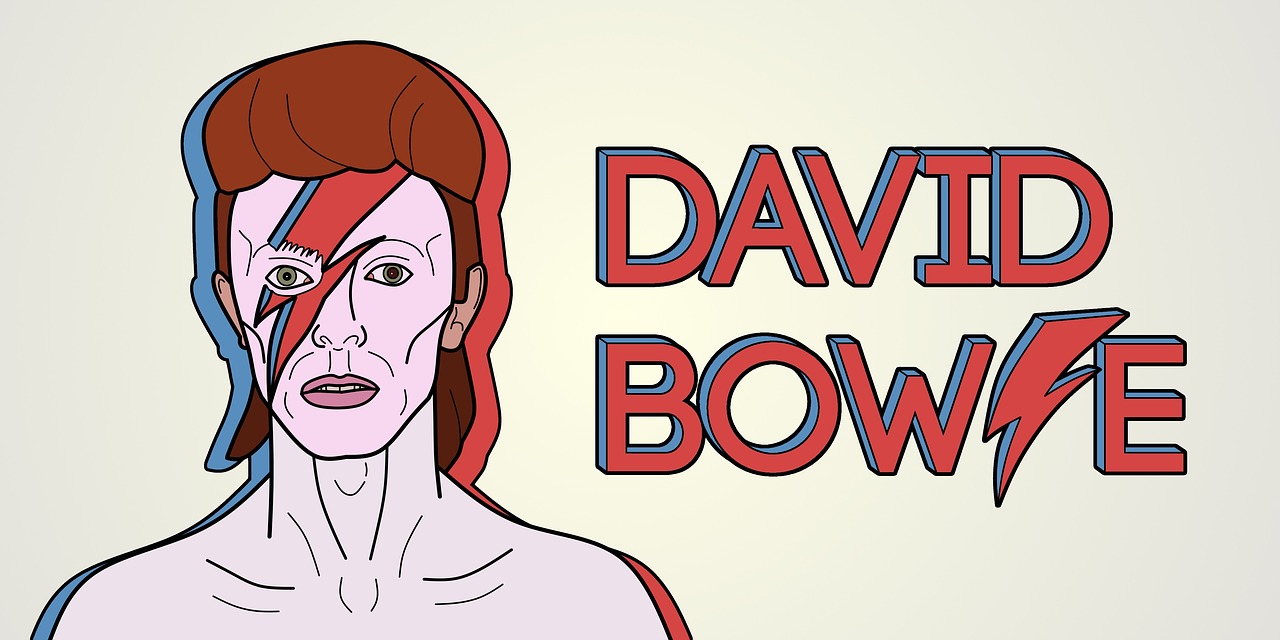David Bowie, an artist renowned for his ever-evolving musical persona, embarked on a remarkable and chameleon-like journey through the world of music. Over the span of several decades, his music underwent a series of transformations that reflected his personal growth, artistic experimentation, and a rapidly changing music landscape. In this article, we will delve into the evolution of David Bowie’s music over time, tracing the various phases and styles that defined his extraordinary career.
The Mod and Rock ‘n’ Roll Influences (1960s):
David Bowie’s musical journey began in the 1960s, a time when he was deeply influenced by mod culture and early rock ‘n’ roll. His debut single, “Liza Jane” (1964), released under the name Davie Jones with the King Bees, showcased his initial foray into music. During this period, he explored rock ‘n’ roll with his self-titled debut album, “David Bowie” (1967), and songs like “Can’t Help Thinking About Me.” These early works provided a glimpse of his budding talent and the influences that would shape his future.
Folk and Psychedelic Rock (Late 1960s – Early 1970s):
As the 1960s gave way to the early 1970s, Bowie’s music shifted towards folk and psychedelic rock. Albums like “Space Oddity” (1969) and “The Man Who Sold the World” (1970) delved into these genres, with the iconic “Space Oddity” single serving as a notable example. These albums showcased Bowie’s versatility and his ability to experiment with different musical styles.
The Rise of Ziggy Stardust and Glam Rock (Early 1970s):
One of the most defining moments in Bowie’s career came with the advent of glam rock. His creation of the Ziggy Stardust persona marked a turning point. The album “The Rise and Fall of Ziggy Stardust and the Spiders from Mars” (1972) catapulted him to international stardom. Glam rock was characterized by its extravagant fashion, theatrical performances, and bold, anthemic music. Bowie’s Ziggy Stardust era became synonymous with glam rock, with iconic tracks like “Starman” and “Suffragette City” epitomizing the genre.
Soul and R&B (Mid-1970s):
In the mid-1970s, Bowie explored soul and R&B music, heavily influenced by the American soul sound. His album “Young Americans” (1975) marked a significant departure from glam rock. Songs like the title track “Young Americans” and the chart-topping hit “Fame” showcased his rich baritone vocals and the incorporation of funk and soul rhythms. This transition demonstrated his remarkable adaptability.
Funk and Disco (Mid-1970s):
Bowie’s exploration of funk and disco continued with his 1976 album “Station to Station.” This album marked a transition from soul to a more electronic and funk-oriented sound. The title track, “Station to Station,” and “Golden Years” exemplified his foray into these genres. Bowie’s collaboration with musicians like Carlos Alomar and Luther Vandross contributed to the album’s distinctive sound.
Electronic and Experimental Music (Late 1970s):
The late 1970s saw Bowie pushing the boundaries of music even further. Albums like “Low” (1977), “Heroes” (1977), and “Lodger” (1979), collectively known as the “Berlin Trilogy,” showcased his experimentation with electronic and ambient music. Collaborating with Brian Eno, Bowie created innovative and instrumental-driven compositions that challenged conventional song structures. These albums were marked by their atmospheric and avant-garde soundscapes.
New Wave and Post-Punk (Late 1970s – Early 1980s):
Bowie’s influence on the New Wave and post-punk movements of the late ’70s and early ’80s was substantial. His Berlin Trilogy and the subsequent albums “Scary Monsters (And Super Creeps)” (1980) and “Let’s Dance” (1983) incorporated elements of these genres. The track “Ashes to Ashes” from “Scary Monsters” is often considered a pioneering post-punk song, and Bowie’s continued experimentation resonated with the evolving musical landscape.
Pop and Dance Music (Early 1980s):
In the early 1980s, Bowie embraced pop and dance music, which resulted in his commercially successful album “Let’s Dance” (1983). The title track, “Modern Love,” and “China Girl” tapped into the vibrant, consumer-driven culture of the time. Bowie’s music during this period was infectious and celebrated the exuberance of the decade, even as it explored themes of love and relationships.
Industrial and Alternative Rock (1990s):
Bowie’s willingness to adapt and experiment continued in the 1990s. Albums like “Outside” (1995) and “Earthling” (1997) explored industrial and alternative rock territory. Bowie’s collaboration with artists like Trent Reznor of Nine Inch Nails demonstrated his embrace of the industrial sound, and these albums resonated with a new generation of listeners.
Nostalgia and Reflection (2000s):
As the new millennium began, Bowie’s music turned introspective. His album “Heathen” (2002) featured reflective songs like “Sunday” and “Slip Away.” Bowie’s introspection and nostalgic undertones resonated with a generation that was beginning to grapple with the passage of time and its impact on identity.
Experimental and Art Rock (2010s):
Bowie’s final albums, “The Next Day” (2013) and “Blackstar” (2016), featured a return to more experimental and art rock elements. These albums showcased his enduring creativity and ability to blend various styles into a coherent and innovative sound. “Blackstar” was particularly significant, given its release shortly before his passing in 2016. The album’s avant-garde jazz-infused sound and poignant lyrics addressed themes of mortality and transcendence.
David Bowie’s remarkable musical evolution reflected his innate ability to adapt and experiment with different styles. From his early rock ‘n’ roll influences and the glam rock extravagance of Ziggy Stardust to his exploration of soul, funk, disco, and electronic music, Bowie’s career was a dynamic exploration of the ever-changing musical landscape. His willingness to challenge conventions and his continuous artistic reinvention solidified his status as an icon of musical innovation and evolution. David Bowie’s legacy is not only one of timeless music but also a testament to the enduring spirit of creative exploration in the world of music.
